17 Women Who Face Difficulties With Their Heads Held High and a Pinch of Irony

The Azores are nine islands in the Atlantic Ocean, sitting about a third of the way from Europe to North America. A history textbook will tell you that the Portuguese explorers discovered this beautiful archipelago in the 15th century. Until then, they were uninhabited.
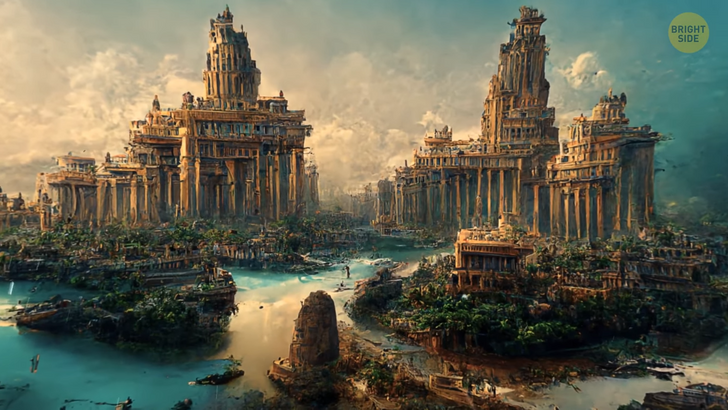
The islands still belong to Portugal, so there seems to be no controversy or mystery here. Except for the fact that some researchers think the Azores were home to an ancient civilization from thousands of years ago. Others support the idea that the famous Atlantis itself was here! In 2010, archaeologists announced that they found some structures on the islands which looked like they were from the Stone Age. If that’s true, it would mean that there was a civilization back then which was advanced enough to travel this far and settle on the remote islands. A special scientific commission studied the matter and concluded that those structures were natural rock formations or had a more modern origin. So, the first settlers were supposed to have been the Portuguese.
It didn’t stop some enthusiastic scientists from further research. They analyzed the DNA of mice from the Azores and found that it had the same genetic characteristics as house mice from Northern Europe. The little rodents couldn’t have sailed this far without humans, so it looks like the first people had arrived at the Azores before the Portuguese. And the plot thickens... Dr. Felix Rodrigues, who works at the University of the Azores, is determined to find out exactly when it happened. He is studying the megalithic structures found in the Azores. Similar structures found in Western Europe and the Mediterranean date back to the Neolithic Age.
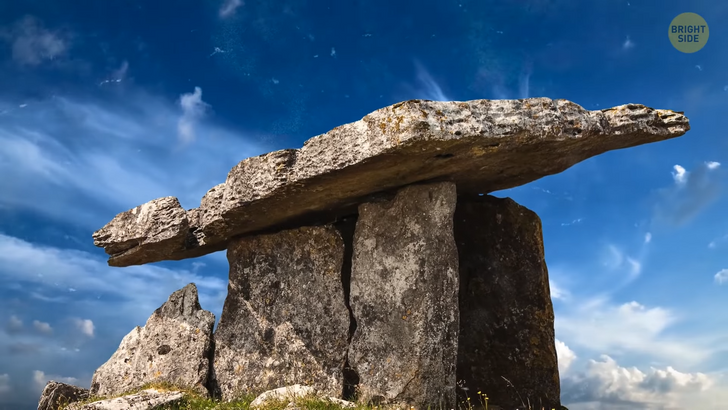
According to Dr. Rodrigues, the oldest findings are from 4,200 years ago. It’s not clear which civilizations left them. The professor identified seven megalithic structures in one complex as dolmens for the deceased. The cavities are all cylindrical in shape and definitely don’t look like a natural formation. The material from the cavities turned out to be at least 2,500 years old. There are also some pieces of ceramics that seem to be even older. It looks like the rocks in the area had been lifted. You can see it by the small waves left by lava. It’s thick and sticky, so it can’t leave vertical marks. Someone must have moved the rock from its horizontal position. Another interesting finding is some stone anchors with holes found by the sea. Similar ones were used in the Mediterranean and on the Atlantic coast of Europe, dating back to 1,000 and 2,000 BCE. The 15th-century Portuguese were advanced sailors and never used stone anchors, only metal ones.
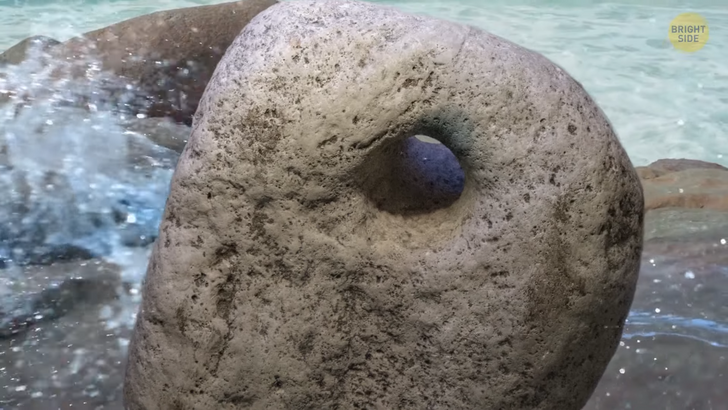
The scientists also managed to find a structure built right in the volcanic tuff. It looks somewhat similar to the ones built in the Mediterranean that are at least 2,000 years old. These structures are called Columbariums and were used to store the ashes of the deceased. They also found something resembling an oven next to it. So, they could be a part of one complex. There is also a basin in the middle, and it’s not the only one on the island. It looks like they had a special meaning to their builders. There are channels around the construction. They connect the four basins, and the Sun lights each of them at different times of the year. It was all carefully planned, as they were lit the brightest during winter and summer solstices and autumn and spring equinoxes. The water passed through all the basins and went directly into the sea. It could have been a purifying ritual.
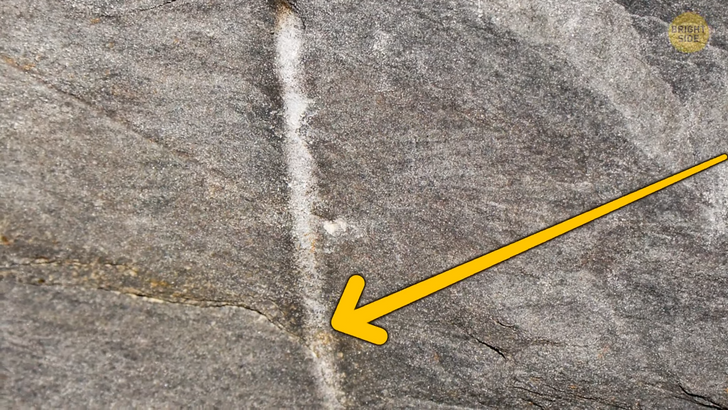
Some people are skeptical about the findings and believe they’re all parts of a fortress from the 16th century. Professor Rodrigues is determined to prove it’s all much, much older. There must have been some ancient civilization here that could have left because of the volcanoes that go crazy every 50 years. Antonieta Costa, a post-doctoral student at the University of Porto in Portugal, is also sure that the first people came to the Azores in prehistoric times. She has studied standing stones with small openings explained as cuts for quarrying the stones. Costa believes they are a part of a calendar system. She noticed that none of the slits in the rocks were aligned with the cardinal east direction. The slits closest to it are smaller than the ones facing other directions. So, it can’t be just a coincidence. It also looks like the slits are aligned with the solstices, and that’s what makes Costa think it could be a calendar. She also thinks the inscriptions left on slabs of bedrock on the islands are much like those maps that were left on the rocks during the Stone Age in mainland Europe.

Another interesting theory about the Azores is that it could have been the location of the famous Atlantis, which was lost under the sea. Since the Azores archipelago is in the middle of an ocean, it could technically be a perfect place for that. A 20th-century scholar quoted Plato to prove this theory was right. The Greek philosopher suggested that Atlantis was in between the continents. The coins and sculptures supposedly found in the Azores when the Portuguese just arrived also point that there was someone else present there. And way more recently, in 2013, a sailor found a huge structure looking like a pyramid off the Azores coast. It is most likely a large submarine volcano, but it’s much cooler to think it was some big deal in Atlantis, right? Peru has its own ancient mystery. Amid the desert, you can find some eerie marks called the Nazca Lines. They are known as geoglyphs and were created more than 2,000 years ago by the people of the Nazca culture.
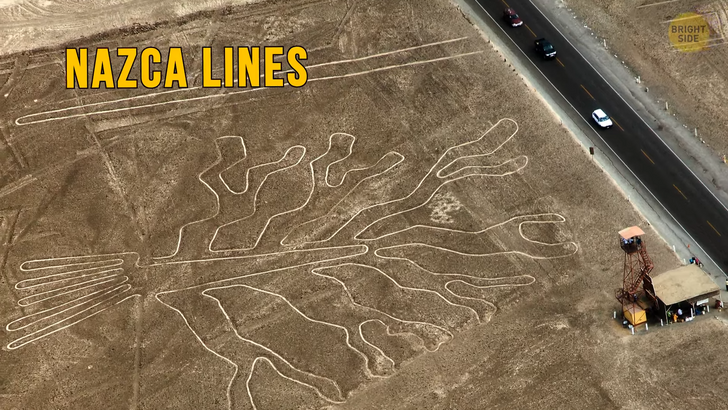
Thanks to a dry climate and strong winds in the desert, most of the Nazca Lines have reached our day. To create them, Nazca people removed the top layer of the pebbles and revealed the soil beneath the ground. The color of the soil changes from reddish-brown to yellowish-grey, so the lines always look different. Most of the geoglyphs depict plants and animals. You can clearly see a monkey, a whale, a condor, a hummingbird, a spider, various flowers, trees, and other plants. There are also some geometric shapes, such as triangles, trapezoids, and spirals. Since they were discovered in the 1920s, scientists have offered different explanations for the lines. Some say that in Nazca culture, people ascribe special significance to these motifs. So they probably created these shapes for deities in the sky to see. Others believe they were a sort of astronomical calendar and animal sketches were modeled after groups of stars. This theory was proved wrong, so the purpose of the lines remains a mystery.
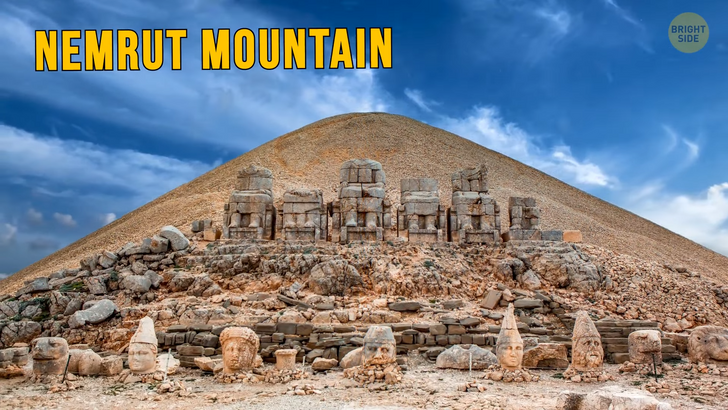
Another place that leaves many questions is Nemrut Mountain in Turkey. This mountain has a complex of monuments with temples and tombs. It was built by the Kingdom of Commagene, which ruled here around the 1st century BCE. There are statues of King Antiochus, two lions, two eagles, Zeus, Hercules, and Apollo. Archaeologists found the ruins of this complex at the end of the 19th century. They thought it was built by the Assyrians. Then, some of the most famous scientists of the time came here and found an inscription in Greek. It had details about the sculptures and the names of important members of the Commagene royal family. It looked like it had been put there for future visitors.
The scientists established that the statues used to be full-size figures. Changes in temperature, strong winds, snow, and the bright Sun didn’t leave them a chance to last in their original glory. Plus, the complex is in an earthquake zone. So all you can see now is mostly the heads of the statues. They look incredibly complex and large for their time. The biggest question is how did the people who lived thousands of years ago manage to create such huge sculptures on the top of the mountain. It’s obvious that they worked on shaping the limestone blocks up there and not on the ground. Stay tuned, we’ll keep an eye on this.











